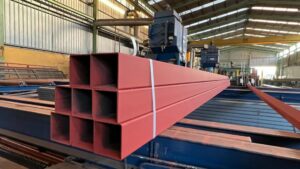
Blast furnaces have no long-term future in Europe, with very few, if any, likely to remain in operation by 2050 when the EU aims to achieve carbon neutrality, according to Andreas Schneider of Stahlmarkt Consult.
Various ways of moving towards carbon neutrality are being considered by EU steelmakers. The closure or reduction of capacity, such as that touted by ArcelorMittal Italia, entails high decommissioning costs and social unrest. EAF-based production potentially with captive direct reduced iron poses questions over whether the steel quality produced is sufficient for high-end applications like automotive.
The Hisarna ironmaking process in combination with carbon capture and storage (CCS) requires CO2 infrastructure. And the capturing and recycling of carbon from steel mill gas, as in the “Carbon2Chem” and “Steelanol” processes, has a high energy requirement.
Hydrogen-based DRI and steelmaking is seen leading the way in Germany because it is innovative and politically attractive, and can potentially zero carbon emissions completely. However, its energy requirement is ten times higher than for conventional primary steelmaking. This would generate an additional 130 TWh of energy demand, around 50% of German energy production in 2019. DRI production based initially on natural gas is a possibility from 2025, with increasing volumes of hydrogen added to the feedstock mix thereafter.
According to a study from German think tank Agora Energiewende, the hydrogen route would result in a €532-630/tonne crude steelmaking cost by 2050 compared to €391/t in 2019. “Steel will be costlier,” Schneider said at this week’s MBI Stahl Tag conference in Frankfurt attended by Kallanish. “And the question again is who will bear this?”
“Green” steelmaking requires a huge investment – estimated at up to €1,000/t – that not many companies can afford. The pace of technological development required is meanwhile unlikely to keep up with demand, leading potentially to steel shortages that will drive up prices. The question is, “…will green steel be produced in sufficient amounts for market demand and will the market pay for it?” Schneider asked.
Among other things, a new wave of certification and bureaucracy is on the horizon, which will include the requirement of labelling all steel with CO2 content. Moreover, a border adjustment tax and “Carbon Contracts for Difference” are being touted, but it remains unclear who will bear the costs of these.
“All of this will make steel costlier and more complicated,” Schneider observed. It could lead to loss of international competitiveness and growing protectionism against German steelmakers who are export orientated, and declining margins if additional costs cannot be passed on.




